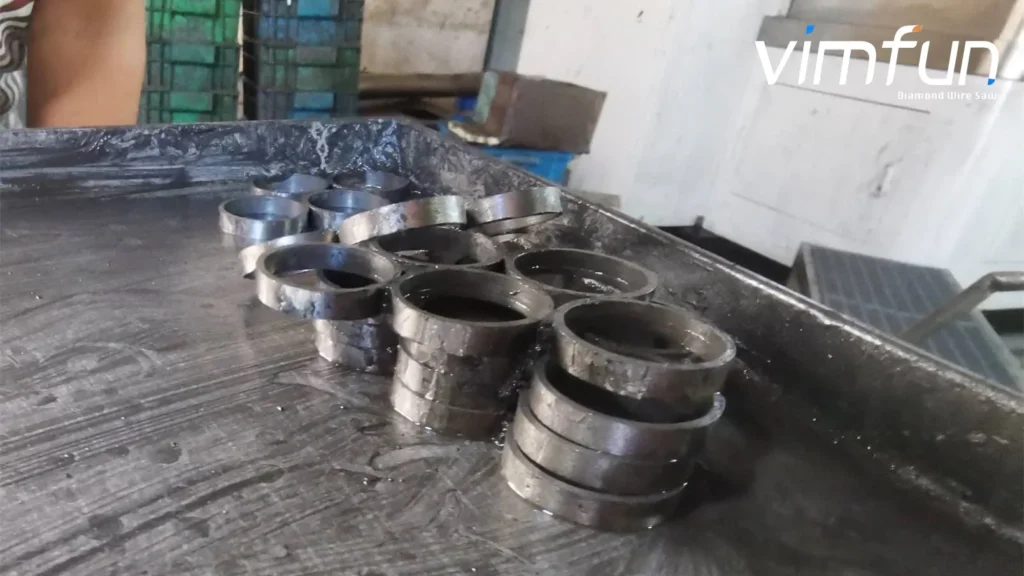When the trade war tightened its grip on critical materials, a quiet storm hit industries reliant on rare earth magnets. One precision component manufacturer, who had long relied on ready-made imported magnets, suddenly found itself without supply. No shipments. No alternatives. Just customer orders piling up and no way to fulfill them.
This is the story of how that company transformed its approach—from dependent importer to in-house processor—by understanding how magnets are really made, and how to cut them the right way.
Why Rare Earth Magnets Became Hard to Source
Rare earth magnets like NdFeB (neodymium iron boron) are indispensable in:
- Motors and generators (especially for EVs and drones)
- Medical imaging systems
- Industrial sensors
- Aerospace and defense technologies
But in recent years, geopolitical friction has made access to finished magnets unpredictable. Export restrictions, tariffs, and quota limitations drove costs up—and lead times through the roof.
Companies that once simply ordered magnetic parts from overseas suppliers suddenly had to figure out: “Can we process these ourselves?”
How Permanent Magnets Are Really Made
Most engineers understand magnets only after they’re magnetic. But the real magic happens before that.
Here’s the simplified path from raw material to a finished rare earth magnet:
- Raw Material Blending
Elements like neodymium, iron, and boron are melted and cast into an alloy. - Crushing and Milling
The alloy is ground into fine powder (usually 3–5μm) in inert atmospheres to prevent oxidation. - Pressing into Shape
The powder is pressed into green compacts under magnetic fields to align grains. - Vacuum Sintering and Heat Treatment
The compacts are sintered at ~1000°C, then aged to improve magnetic properties. - Precision Cutting
Sintered blocks are cut into exact sizes or complex shapes—usually still unmagnetized. - Surface Coating
Since NdFeB is corrosion-prone, surfaces are plated with Ni-Cu-Ni or coated with epoxy. - Final Magnetization
The shaped parts are exposed to strong magnetic fields—this is when they become magnets.
Until the final step, they’re just hard, brittle ceramics. And that’s where cutting comes in.
Cutting Rare Earth Magnets Isn’t Easy

The company initially tried bandsaws and abrasive wheels to cut sintered blocks. The results?
- Chipping at the edges
- Uneven surfaces
- Dust everywhere, even with local extraction
- Operator safety concerns
They burned through blades and scrapped material faster than they could produce usable parts. That’s when they found us.
How Diamond Wire Saws Changed Everything
With guidance from the Vimfun team, the company tested our SG20 and SGI20 models. These machines use an endless loop of fine diamond wire (0.3 mm) to gently slice hard, brittle materials like sintered NdFeB.
Within weeks of switching, they saw:
- 70% reduction in chipping and material loss
- 50% shorter post-processing time (less polishing needed)
- Operators trained and cutting within a single shift
Video: NdFeB block cutting using SG20 – clean edges, fast cycle
They no longer depended on imported parts. They became the supplier.
Why It Works
Advantages of Diamond Wire Saw Cutting for Magnets
- Fast cutting speed without aggressive contact
- High-quality surface requiring minimal grinding
- Thin kerf (~0.35 mm) saves expensive material
- Wet cutting = low dust, safer for people and cleanrooms
- Simple setup and operation—no tool sharpening, no sparks
And since the material is unmagnetized at cutting, there’s no issue with magnetic interference.
When policy changes closed the door on imported rare earth magnets, this company opened another—into in-house production. They didn’t become experts overnight, but with the right equipment and some guidance, they turned risk into opportunity.